- News
- Reviews
- Bikes
- Components
- Bar tape & grips
- Bottom brackets
- Brake & gear cables
- Brake & STI levers
- Brake pads & spares
- Brakes
- Cassettes & freewheels
- Chains
- Chainsets & chainrings
- Derailleurs - front
- Derailleurs - rear
- Forks
- Gear levers & shifters
- Groupsets
- Handlebars & extensions
- Headsets
- Hubs
- Inner tubes
- Pedals
- Quick releases & skewers
- Saddles
- Seatposts
- Stems
- Wheels
- Tyres
- Tubeless valves
- Accessories
- Accessories - misc
- Computer mounts
- Bags
- Bar ends
- Bike bags & cases
- Bottle cages
- Bottles
- Cameras
- Car racks
- Child seats
- Computers
- Glasses
- GPS units
- Helmets
- Lights - front
- Lights - rear
- Lights - sets
- Locks
- Mirrors
- Mudguards
- Racks
- Pumps & CO2 inflators
- Puncture kits
- Reflectives
- Smart watches
- Stands and racks
- Trailers
- Clothing
- Health, fitness and nutrition
- Tools and workshop
- Miscellaneous
- Buyers Guides
- Features
- Forum
- Recommends
- Podcast
feature
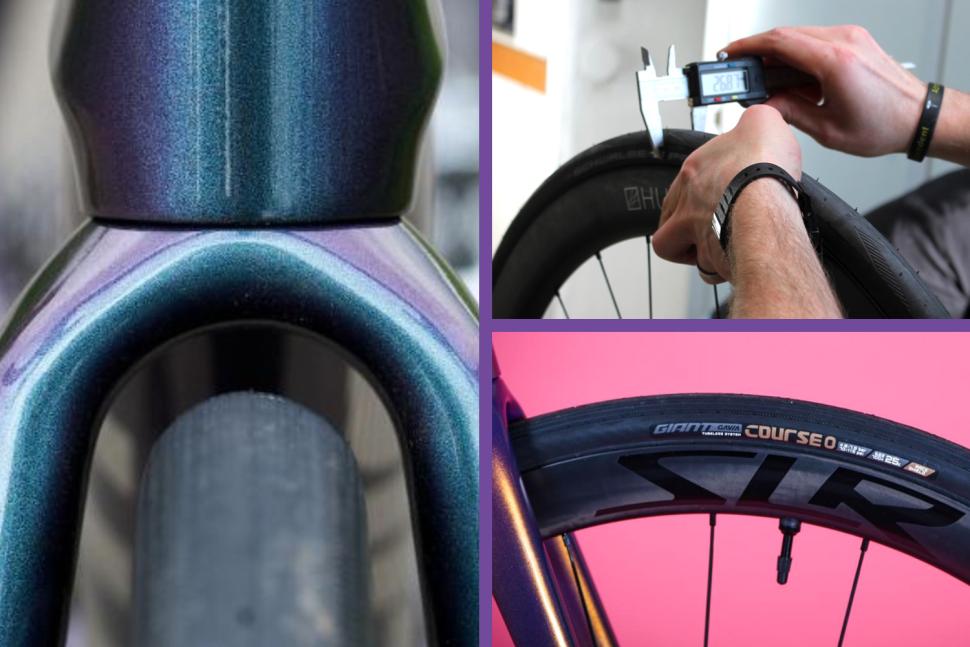 Why wider tyres on road bikes are here to stay March 2024
Why wider tyres on road bikes are here to stay March 2024Why wider tyres on road bikes are here to stay… and why they may get wider still
Road bike tyre widths have ballooned in the last few years, and while a 23mm tubular tyre used to be praised as the fastest setup on earth, it's now been overtaken by 28mm tubeless tyres. The shift to wider road bike tyres is not a passing trend; the way it's transformed ride quality, comfort, and performance are all qualities that none of us want to compromise on anymore, and rightly so. This all begs the question: how wide will we go?
We've asked a whole host of industry experts, and while many of them think we're close to the maximum tyre widths, some believe we can go even wider. Ever wider tyres cannot exist alone, though. They require a bike with enough clearance, as well as compatible brakes and wheels. And that - the entire rim, brake and tyre interaction - has changed drastically over the recent years.
"There’s a requirement from a broad spectrum of brands to align on where the next developments will happen. Don’t be surprised to see even bigger road tyres," Hutchinson says.
But how wide can we expect tyres to be, then - where is the limit? Or is there even one, and will 23mm tyres soon be a thing of the past... Read on to find out.
How wide are road bike tyres in 2024?
Tyre widths have really come a long way since the early days of cycling, but it's not all solely down to advancements in tyre technologies. The trend towards wider tyres is closely linked to the fact that advantages of wider tyres have been scientifically proven, and supported by the ability of bike frames to accommodate greater width. This has led to their widespread adoption in both the pro peloton and among recreational riders.
It's not only the simple frame clearance that differentiates modern bikes from their vintage siblings. Before carbon bikes became a thing, bikes were made very differently as a whole.
"Wind the clock back 10 years or more to when everyone in the peloton was riding a steel frame bike with shallow section rims; the bike frames and wheel rims had a degree of inherent flexibility and compliance which provided comfort," says Tim Ward, Schwalbe's UK Marketing Manager. "Therefore, riding narrow 19mm wide tyres at 120 or 130 PSI was not so much of an issue,"
You could expect things to change over three decades or more, but we're already many millimetres ahead of what was considered a 'wide' tyre back in 2018. That's when Business Insider ran an article titled "Why the tyres at the Tour de France keep getting wider and the pressure lower".
The piece took a deep dive into the tyre widths of that year's and concluded that "by far the most common widths were 25mm and 26mm. And while it's difficult to compare Tour speeds based on tyre width and pressure, the growing research and the massive push across teams to wider tyres and lower pressure speak volumes."
Fast forward to the most recent Tour de France, and you'd struggle to find a tyre measuring narrower than 28mm – even if it had that printed on the side wall – as most modern tyres are paired with ever wider rims for aero advantages. They are also the one thing that can make riding a stiff and snappy, modern road bike a little more comfortable.
"Modern carbon frames and wheels, by contrast, are very much stiffer and less complaint, although they are, of course, much more efficient in terms of energy transfer from the pedals to the ground," says Tim Ward. "So, the only real way to derive a reasonable amount of comfort on a modern road race bike is through having wider tyres at lower pressure, to provide a degree of compliant suspension."
Shelley Childs from Cambrian Tyres - one of UK's largest independent 2-wheel tyre distributors - echoes Ward's points, saying there are three distinct reasons why wider tyres have taken off.
"Firstly, I think wheel manufacturers played their part. It’s a bit like asking what came first, the chicken or the egg, did internal rim sections get wider first, and tyres followed suit, or was it the opposite that happened? Performance road tyres have always been available in 25mm and even 28mm, so the wider tyre choices for the initial new wave of wider rims were already on the shelf for cyclists to choose from in the early days of this trend. So let’s assign this piece of the missing jigsaw puzzle to the wheel manufacturers, especially once carbon clinchers became available, and subsequently hookless carbon rims.".
Childs points out that after wider tyres appeared, manufacturers and independent testing companies showed that wider tyre setups were actually performing well, the media (us!) picked up on the trend and soon, wider tyres were the thing. This was, of course, enabled by the ever-increasing prevalence of disc brakes, allowing wider tyres to be fitted. Soon, more pro riders were rolling on wider tyres, not just at the cobbled classics, but also at races such as Strade Bianche, which features gravel road sectors.
Ever wider tyres are also in fashion beyond road cycling. Mountain bike tyres have always been the widest, but the newest kid in the block, gravel, has also adopted wider tyres. While 38mm used to be common in the early days of gravel, now the most capable gravel bikes are equipped with 55mm tyres, or even wider. The increasing popularity of gravel also played a part in how road tyres got wider. Roadies dabbling off the beaten path noticed the plushness of the wider tyres and wanted more of it.
What makes wider tyres faster?
If you are not convinced that wider tyres are faster on the roads, you're not exactly alone. But there is an increasingly deep pool of research pointing out the benefits of rolling on wider tyres, and that is something that should change your mind. If you believe the earth is flat, though, you can probably just keep doing what you're doing and stop reading here.
Without pretending I excelled in physics, I asked the experts to explain why equipping my bike with wider tyres would make it faster - or more efficient. There are more factors than just rolling resistance, aerodynamics and vibrations to take into account, and this is perhaps best visualised in the below equation that is part of Zipp's Total System Efficiency document, in which the brand takes a deep dive into how the best road bike wheels can make you faster, but also on how the wheels alone will not make a big difference.
Rolling resistance
The first thing usually mentioned in conjunction with more efficient tyres is rolling resistance. In short, rolling resistance is one of the forces that oppose you as you ride forward. The main reason for it is that the tyre is constantly deforming as you move (we're not looking at things like bearing friction). Not all of the energy used to deform the tyre is recovered when the pressure is removed.
Continental's product manager Jan-Niklas Jünger summarised it like this: “Material deforms in contact with the ground, molecules rub against one another creating heat that goes into the environment. That’s where you are losing energy in what we call rolling resistance.”
So with the tyre being in contact with the road surface, you lose energy. Surely then, a wider tyre equals more energy lost? Well, it's not that simple, and as you can see in the above graph, aerodynamics plays an even bigger part in slowing you down, especially when the speeds increase. But it still makes a difference.
"The rolling resistance benefits of wider tyres are derived from two main areas. Firstly, the way the contact patch with the road changes as the tyre gets wider, and secondly, how the compliance of a tyre at lower pressure helps to retain energy," Schwalbe's Ward explains.
"It helps to understand how air pressure works in the enclosed system of a tyre. It all relates to Boyle’s Law [I’m sure many will remember that from school!] which simply states that the pressure and volume of a gas of a given mass at a given temperature are inversely proportional to each other.
"As the volume decreases, the pressure increases, and vice versa. Then, for example, for a tyre with twice the internal volume as another tyre, the air inside will exert the same force at half the pressure of the first tyre.
"This leads to explaining the difference between the contact patch for a wider tyre compared to that for a narrower tyre. With a given weight on a tyre as per our previous example of two tyres, one twice the width and half the pressure of the other, the contact patch areas will be the same. However, to effect the same contact patch area, the narrower tyre will have a longer, narrower contact patch in comparison to the wider tyre. This means that at any given moment there is a larger arc angle of the tyre in deformation compared to the wider tyres, which have a shorter wider contact patch."
This all can be quite difficult to understand, but the below graphic from Schwalbe visualises the contact patch quite well.
"So, the narrower tyre has more of its sidewall in deformation at the contact point which in turns mean slightly more internal friction (hysteresis), and therefore increased rolling resistance, compared to the wider tyre. The real added benefit, though, comes from the fact that a larger volume tyre can support the same weight as a narrower tyre at a considerably lower pressure," Ward concludes.
Vibration and aerodynamics
A lower pressure alone doesn't necessarily correlate directly to more efficiency and faster speeds. What it does correlate to, though, is more comfort and less vibration – which is another aspect tyre designers look at closely.
Lower tyre pressures allow for more compliance in the tyre, which in turn gives you a more comfortable riding experience. It also reduced rolling resistance on not-perfectly-smooth, real-life road surfaces. Ward explains that the extra compliance in the tyres absorbs irregularities in the road surface and returns a lot of that energy as the tyre rolls around and springs back out again.
Vittoria uses the cobbled race stages as an example to explain the benefit, saying the cumulative effect of the bumps will add time to your ride, and you will also feel more fatigue from all that bouncing about, which will negatively impact your potential output for the rest of the ride.
Childs says: "Compare this [a wider tyre] to a 23mm tyre on a 15mm internal rim, inflated to 120psi or greater. Energy is lost, and fillings are rattled and removed. Narrower tyres need a very high pressure to win the rolling resistance debate, and then after all of that, they only win on a smooth surface.
"Velodromes and closed circuits may still be seeing many 23mm tyres used, and British Cycling and other federations and still looking at the other factor, aerodynamics, with 23mm still not being dismissed from this debate for top-level track competition use."
What's the limit for road bike tyre width - or is there one?
With seemingly very few downsides to everyone adopting wider tyres, we also asked industry experts: how wide can we go? Have we reached the limit? The jury is still out on that.
"I think we probably have," says Schwalbe's Tim Ward. "Despite Schwalbe having recently introduced a 38mm Pro One, the optimal lies somewhere on the 30mm to 34mm range, I would suggest, with everything taken into consideration and allowing for the requirements of different types of racing, riding, and surfaces – the Goldilocks zone, you might say, although I don’t think there’s necessarily any direct correlation to bears or porridge!"
Vittoria, on the other hand, believes that while current tyre technologies might be sufficient for many, others will be pushing the limits further.
"For some, this pursuit will mean going wider to some extent, in an effort to gain benefits. For some, this will mean keeping the same size tyre, but changing to a new construction, compound, or insert system," the brand says.
Hutchinson, similarly, says it doesn't rule out even wider tyres.
"It’s not just about the tyres: the entire rim / disc brake / tyre interaction has changed in recent years. Looking at that as a whole, and throwing frame manufacturer tyre clearances into the mix - there’s a requirement from a broad spectrum of brands to align on where the next developments will happen. What we can say is that’s an area we’re keenly interested in. Don’t be surprised to see even bigger road tyres. Watch this space!"
Childs believes that 30mm tubeless tyres are the sweet spot for most, but that 35mm will be the max width for those racier road tyres.
"For the recreational rider, the trend may continue, especially as gravel riders want fast road tyres for the Sunday road ride, dispensing the need to use a ‘winter hack’ or best bike for the longer rides. These guys and girls are mopping up 35mm Continental GP5000 AS TRs like there's no tomorrow.
"If there were a 37mm available, who knows? I think that we’d see sales here, albeit smaller in the short to mid-term. A lot depends on the road bike clearances, of course, and whether we see wider road tyres will ultimately depend on the bike manufacturers – they will probably take the lead on this," Childs says.
And are we going to see the narrower tyres – 23mm, say – disappear altogether? Likely not.
"No, I don’t think we’ll see 23mm dropped completely," says Childs. "Less choice for sure, but there is still a market for this size, not forgetting performance wheelchair users."
Should you choose wider tyres?
It's easy to think that a wider tyre could make you slower, and if you look at extremes, that might be the case. A chunky mountain bike tyre will slow you down more than a 28mm road tyre, as it creates more heat and rolling resistance. Wider tyres are not for everyone, and they certainly have downsides.
"It’s not an absolute rule that wider tyres are faster, as the construction (casing, compound, tread), as well as system (tubeless, tubular, inner tube) can have a large, measurable effect on the rolling performance," Vittoria confirms.
> How to choose the best width road tyres for your riding
But increasingly, cyclists are steering towards wider tyres and this is apparent in bike design, as most endurance road bikes now take 35mm or even 38mm tyres as standard, and most racier road bikes can take up to 32mm.
"Of course, increased size comes with a slight increase in weight, but the difference is a matter of just a few grams, so the downside is minimal. Additionally, wider tyres are slightly less aero, which is another potential downside, although this strongly depends on the frame, fork and rim design," Vittoria says.
When you leave smooth surfaces, wider tyres offer even more significant advantages, as they allow for enhanced comfort and traction. In the UK, roads are filled with all sorts of holes and debris, and it definitely helps to have wider tyres in typical riding conditions.
While tyre width plays a large role in performance, the true determinant of speed and comfort also lies in the quality of the tyre's casing and profile. High-performance road bike tyres with supple casings offer better traction, comfort, and efficiency, regardless of their width, so if you swap for wider tyres, don't only look at the millimetres.
Your wheel rims can have a huge impact on how your tyres sit and even make them wider or narrower - and you might be limited in how wide you can go if you have a narrow rim.
"Look at the rolling chassis you have; one tyre size isn’t the best," Childs advises. "Look at what works well with your internal rim width and rim depth, then balance aero and weight. For example, if you have an older, narrower rim, fitting a new 30mm tyre might be very comfortable, but might not work aero-wise with your wheelset."
What about hookless rims and wider tyres?
After the recent conversations surrounding the use of hookless rims, it's worth bringing up the issues linked to this design. The hookless rim tyre width requirements are generally given by the relevant wheel manufacturer, but in general, they preclude anything less than 28mm in width and the tyres need to be tubeless, as only those stay put on the rims without hooks.
Generally, hookless rim design offers the benefit of lighter weight, easier manufacturing and certain performance advantages; improved rolling and ride characteristics and, depending on the rim profile, some aerodynamic advantages. The downsides of hookless rims include the fact that the tyres need to be tightly fitting, but this then comes with the difficulty of actually getting them on.
The experts we talked to all emphasised the importance of consumers checking the tyre and rim compatibility and following the ISO (International Organization for Standardization) guidelines, especially on tyre pressures and rim/tyre compatibility on hookless rims. As a general rule, hookless rims should never be inflated beyond 70PSI, though the wheel manufacturer's recommendation might be even lower than that .
"We decided to make our upcoming road tyre our first hookless road option, but it comes with some stricter caveats around maximum pressures," says Sylvie Woroniecki from Hutchinson. "There has to be a complementary relationship between rim width and tyre width, due to the impact this has on the mechanical raising of the tread. For better proportionality with rim width, resulting in a less 'bulbous' and more U-shaped profile, it’s best to stick to the widths advised by your rim manufacturer."
Tyre manufacturers, as Sylvie Woroniecki points out, don't necessarily have a say in what wheel brands do with their rim designs, but they rather adapt to what has been developed and also what consumers want.
"For hookless technology, for example, we need to adapt, but we can’t say we believe in it more than other technologies, especially given the issues consumers sometimes experience - not understanding the importance of respecting the lower pressures specified for hookless set-ups, for example.
"Some consumers aren’t even aware they have hookless rims and therefore don’t buy compatible tyres or inflate to the recommended pressures. We might see accidents because of this confusion, so greater general awareness and consumer education by all involved would be a positive step forward. As a tyre manufacturer, we’re not aware of better performance for hookless set-ups but we listen to customer feedback and demand, and there is support for it currently."
Latest Comments
- mikeclarke 39 min 1 sec ago
Sheffield has an appalling road safety record, in particular child deaths caused by cars is above average. A campaign to increase the number of...
- Miller 1 hour 43 min ago
I'm reading this as the komoot founder cashing out? Tough on the staff who'll get a redundancy notice and not a payout.
- Rendel Harris 2 hours 9 min ago
You can pick them up for £129 at Cyclestore now with free postage.
- Jakrayan 2 hours 23 min ago
A tandem might work if it was specially made so that she was at the front. Realistically, I'd probably enjoy staring at her bum more than she would...
- David9694 4 hours 40 min ago
I certainly don't put every story about every fatal crash I encounter, this pair just got me curious, like why are 90 year olds still driving and...
- Vo2Maxi 5 hours 13 min ago
Over 25 years ago now, I was on the Ideal Travel winter training camp in Majorca....
- chaos 5 hours 22 min ago
Great news for titanium and steel owners like me. My metal rim bikes roll on. Sadly, my venture into carbon territory is a different story. Anyway,...
- Sredlums 6 hours 5 min ago
I honestly can not yet get my head around how this thing is supposed to work. What I do know is that it does not have the chain on each side,...
- Bmblbzzz 6 hours 46 min ago
And it's worth remembering it's not just Park St – it's from Vic Rooms down to College Green. https://www.bristol247.com/news-and-features/news...
- David9694 8 hours 32 min ago
Driver taken to hospital after flipped car shut road near Barnstaple...
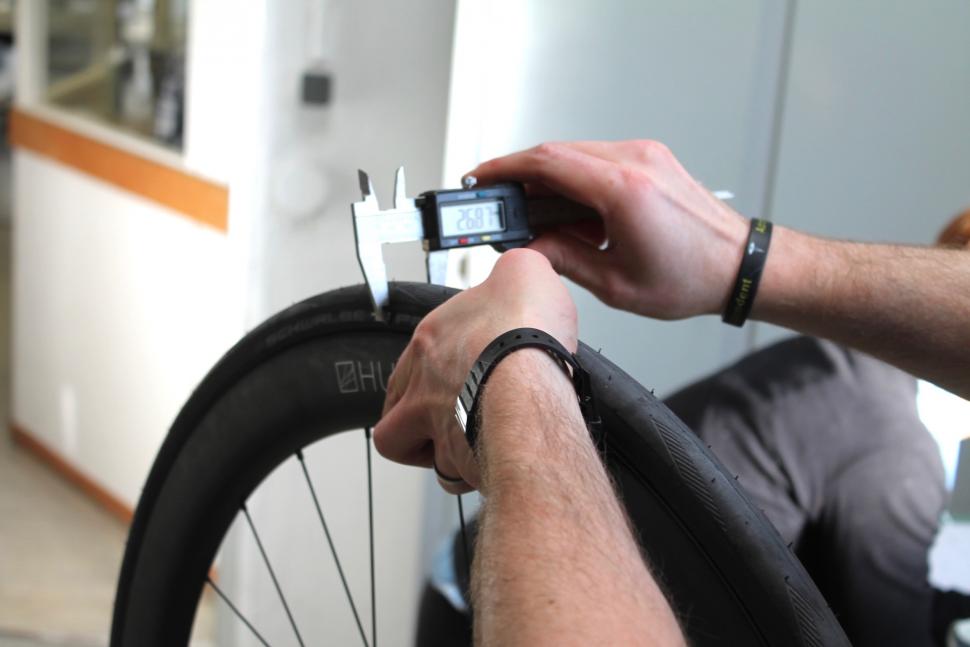
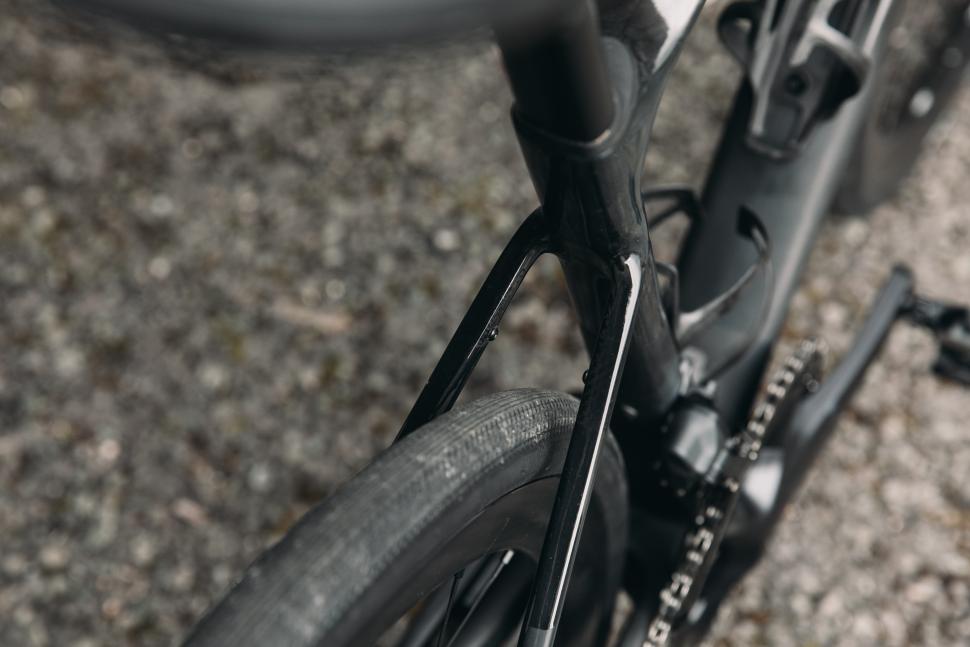
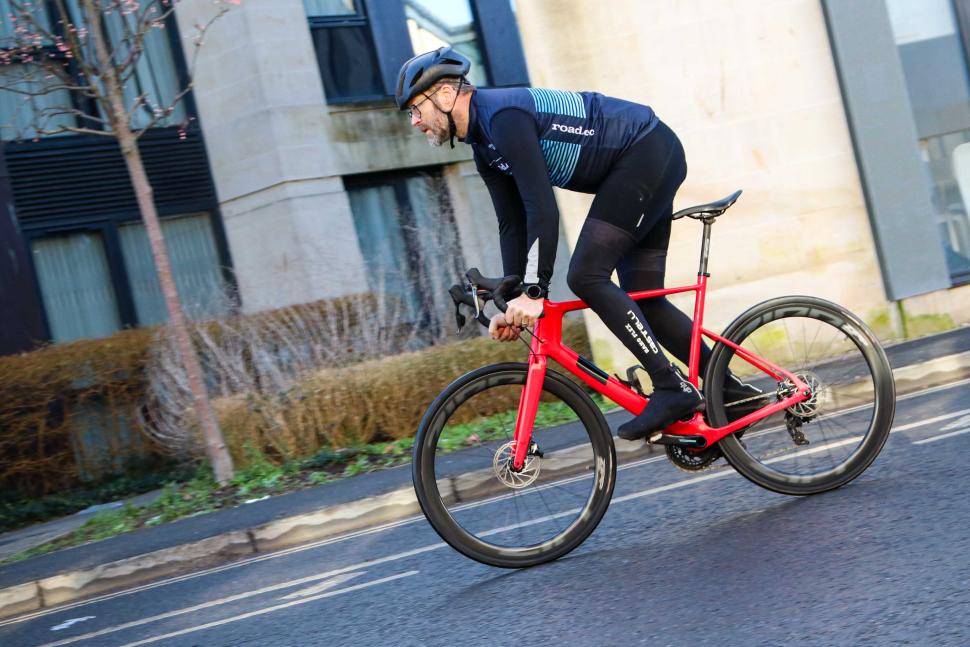
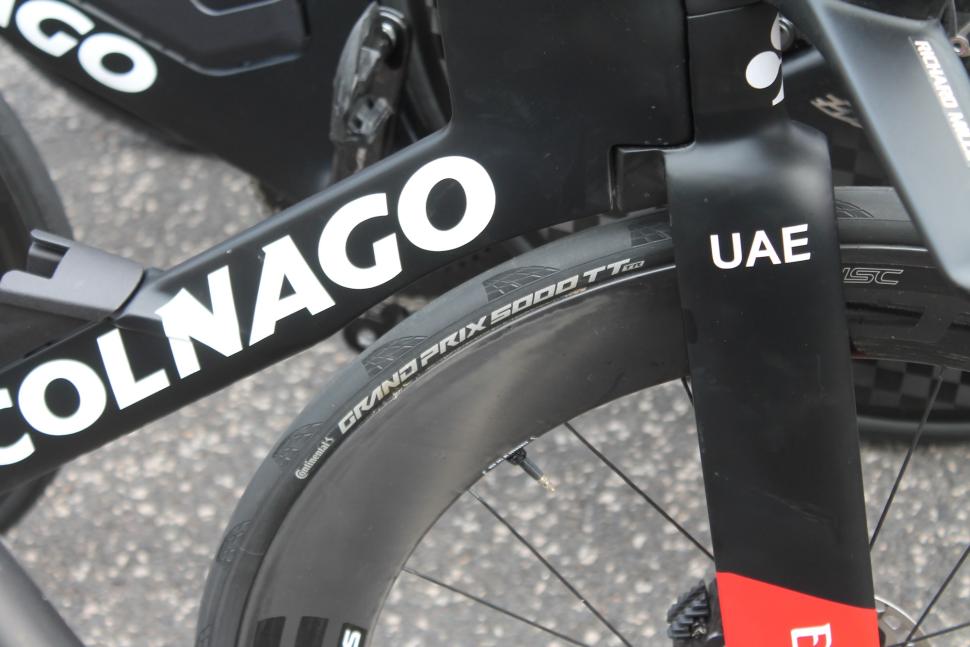
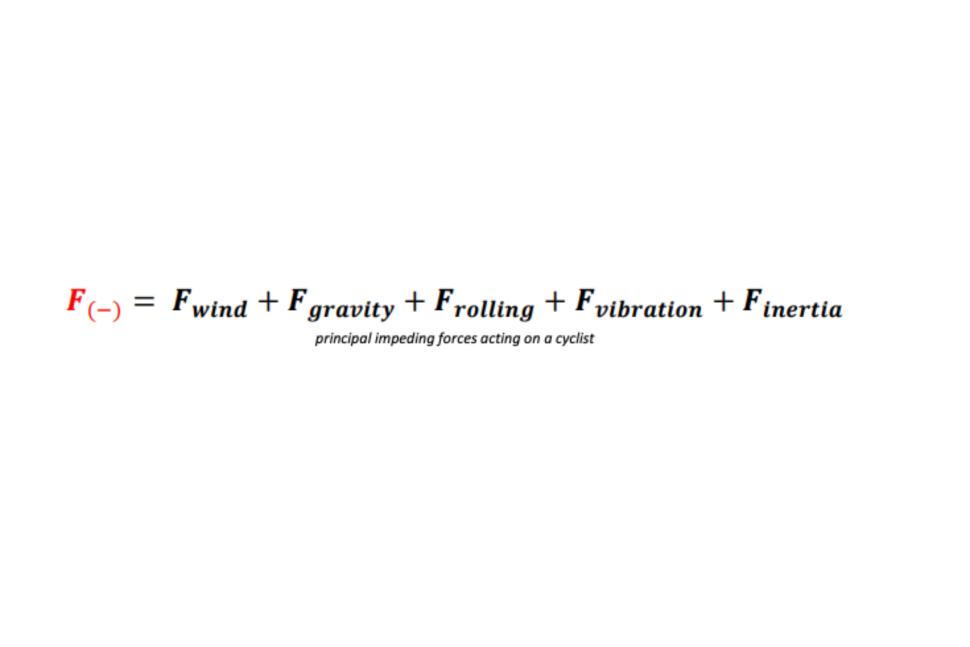
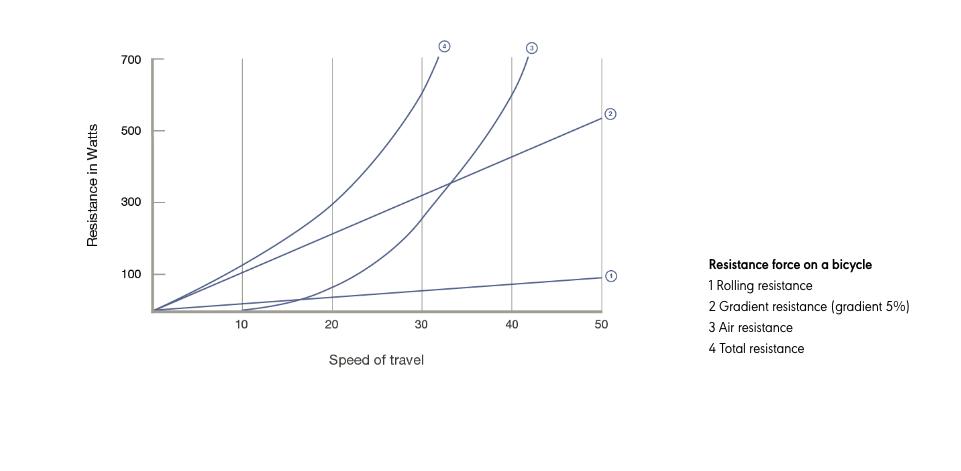

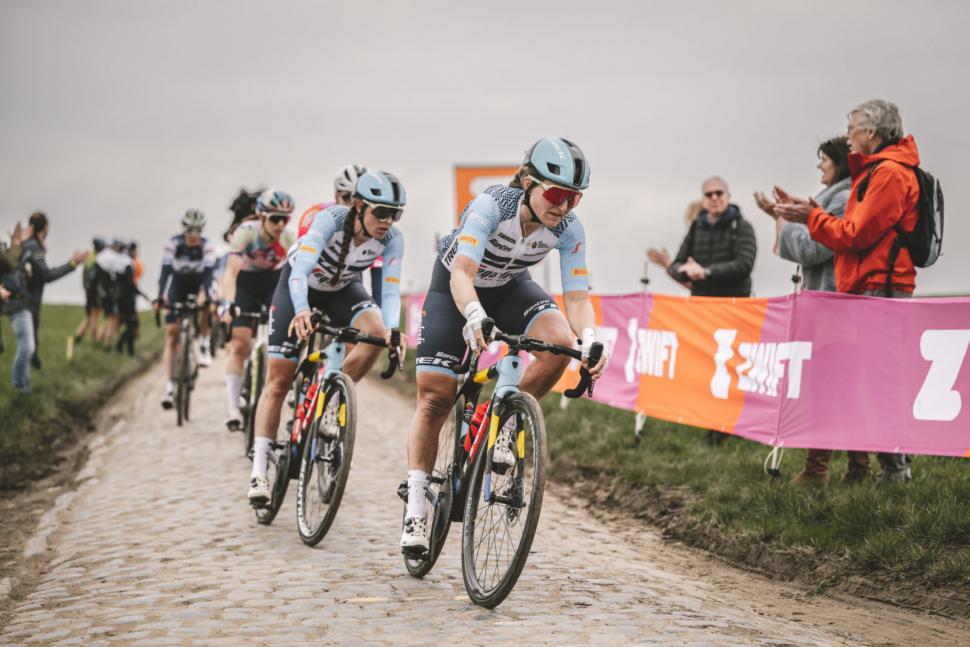
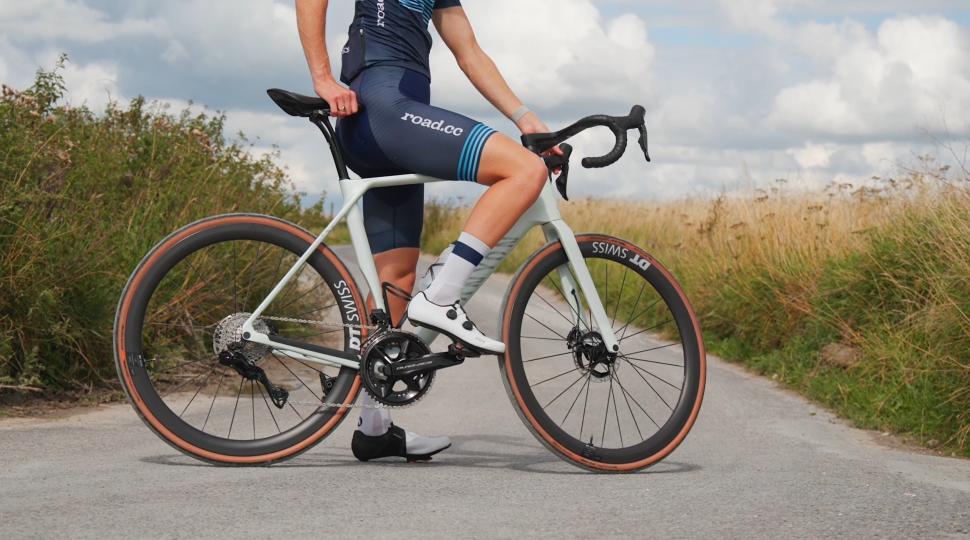
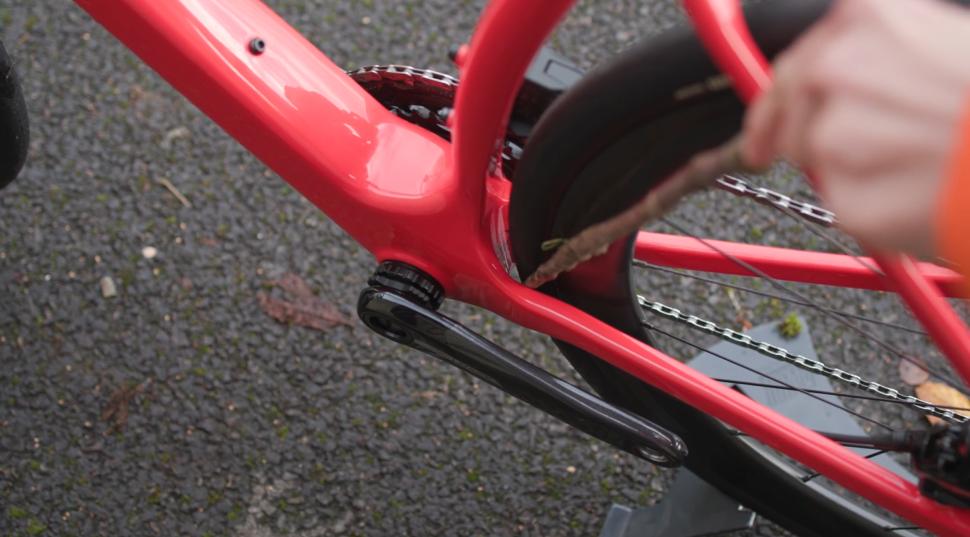
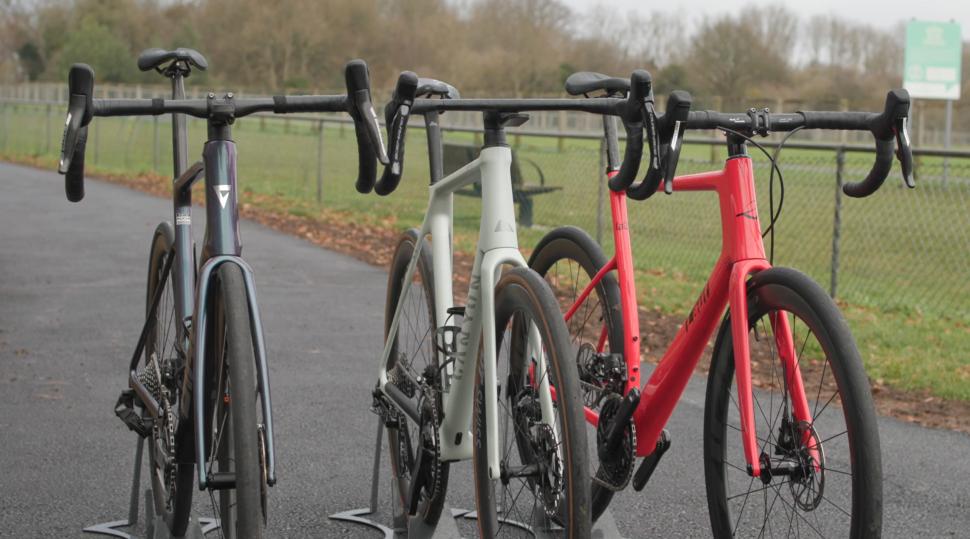
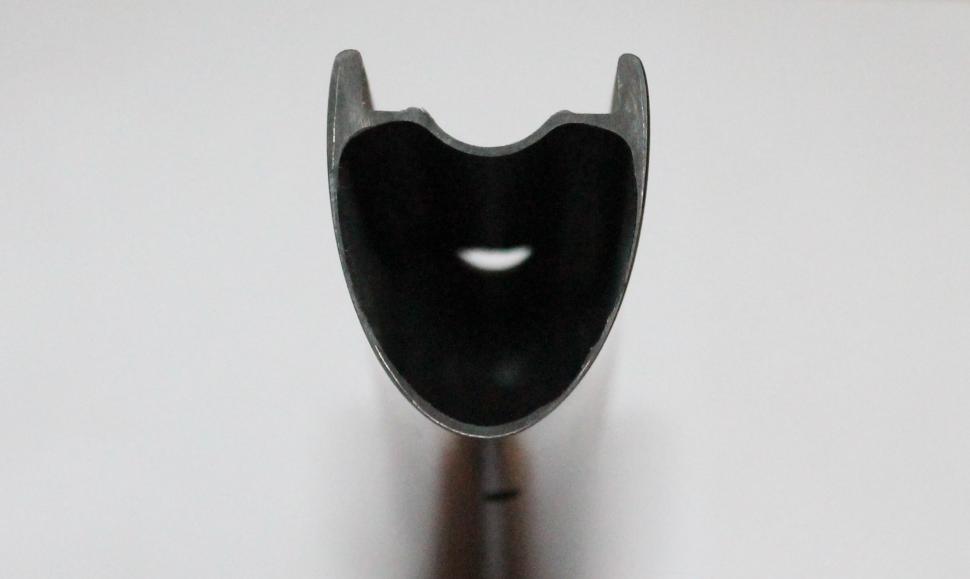
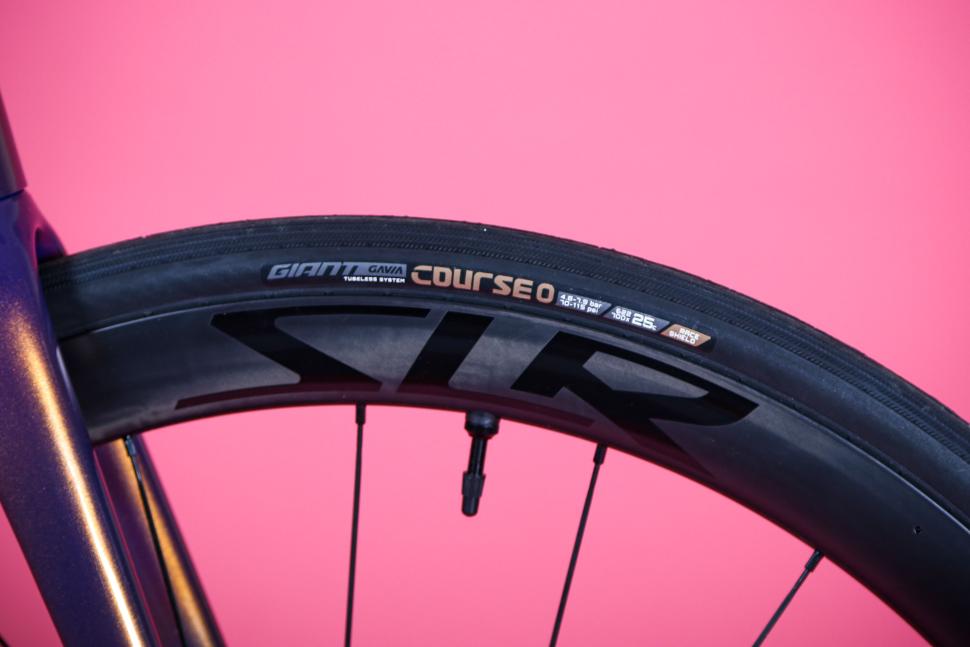
Add new comment
42 comments
My 2012 Steel framed road bike does not take any wider than 25's with mudguards (I ride all year round, including daily commutes) so I can't go any wider, however if I was to get a new bike I would get one that would fit maybe 30mm with mudguards. The stats do make sense, but at least my Reynold 725 frame probably goes some way to absorbing some of the road vibration than a stiff carbon one.
40 years of riding experience ( commuting, road (seen about 5 other riders this winter where are you all?), gravel, mtb (riding Cannock chase 1990) touring ( worldwide), im not against technology electronic groupsets fine if youve can afford it but the way cycling has gone in this country is not good.
Bicycles and equipment at daft prices puts newcomers off.
You need cycling to be affordable to get the masses to use it and onto the roads to create better cycling infrastructure. More cyclists mean a bigger voice , creating respect and acceptability to the public and drivers, making it less dangerous,
In the uk its beeen made into a niche activity by the consumerism this creates resentment and hostility and why the uk is not a good place to ride a bike.
Quote from Cyclist magazine;
‘There are those pushing hard for wider tyres because they make wider rims. They claim there are performance reasons, but a lot of it is down to manufacturing. They are making hookless rims because they are easier to manufacture, but the maximum recommended hookless tyre pressure is 72.5psi [according to the European Tyre and Rim Technical Organisation, ETRTO].
So if you are limited to that pressure, your rims and tyres will have to be wider, because only wide tyres will perform well at this pressure – a 28mm tyre at 72.5psi will be slower than a 30mm tyre – and wide tyres need wide rims to support them properly.’
Selling you stuff its a business.
The first, and still best, wide supple tyres were and are clinchers, over 10 years ago, on rims made from aluminium...
I thought wide rims and tires were marketing hype until I bought a bike in 2019 that had both... 700x32C tires on a 25mm internal width rim. Now I'm a believer despite decades of riding tires 700x25C and narrower. The wider tires don't "feel fast", but my ride metrics tell me otherwise and I don't feel beat-up anymore after a ride on Wisconsin's bumpy roads.
I can tell you that riding on 25mm is faster than equivalent 28 or 32mm.
Narrower tyres are faster but a harsher ride.
The pros use 25 or 28's because thats whats been developed so they all use them and it becomes the norm and they like them as there more comfortable. Its a team sport so one rider couldnt ride a faster 18mm if one was developed.
The new 28 is faster than the narrower old tyre because the technology has advanced. The industry likes that, the sponsers need to sell the technology to the public to make money. It would be a hard sell to sell you 18mm tyres now that gave you a hard ride but were faster.
Ironic that flat earth statement is that in the same ballpark as the marketing sell of ;
1k 3kg groupsets, 100 quid casettes ( with silly wide gaps), hydraulic road brakes on summerbikes, chains lasting 500miles,etc etc.
What are your thoughts on electronic shifting? (eyes down for a full house 🍿)
Well I for one am certainly prepared to rely on what some random bloke on the Internet can tell me without the slightest evidence over and above all the available scientific research, be mad not to, wouldn't it?
The only place that might be the case is an indoor velodrome.
But outdoors on tarmac, even on smooth blacktop, the wider tyres are at least as fast and often faster. Rolling resistance tests have shown it over and over again. When surface roughness increases a wider tyre can will transmit less of the vibration to the rider (providing you adjust pressure accordingly and don't compare them at the same pressure).
If you take your head out of the sand you might be pleasantly surprised.
If you simply have a preference for riding on 25mm tyres then that is perfectly fine.
A narrower higher pressure tyre is faster, higher pressure equals a smaller contact patch on the road with less friction.
We have moved to a wider tyre because the marketing forces have invested into better tyre technology at wider tyre sizes so 28mm becomes fashionable and sell you more bikes.
Put the pros on a 18mm tyre of the same rubber as the 25 or 28 and id bet they would produce faster times, but a more uncomfortable ride.
They wouldnt have the pros back on 18s though because the sport dictates the technology thats sold.
Theres a lot of wrong information in this article.
Good grief, your evidence hating bigotry merely places you in the same category as flat earthers.
So professional cyclists, who spend hundreds of hours every year refining their position and equipment to try and save milliseconds in a TT, are deliberately eschewing the opportunity to produce faster times by simply putting a different set of wheels on their bikes? When Pogacar needs to gain three seconds over Vingegaard to win the Tour on the final day TT in Nice he wouldn't use narrow tyres even though they would win him the race? That'll be bollocks, then.
Did you actually read the article? I'm guessing not. There's a certain mindset in a lot of club cyclists where their whole identity is based around a particular era of cycling and literally nothing will budge them from it, regardless of the evidence. I started road cycling about 10 years ago, I came from mountain biking. I used tubeless wide tyres right from the start. Another huge advantage of wide tubeless tyres for road cycling is resistance to snakebite punctures. I have seen loads of punctures in group road rides from impacts with square edges, but never had one myself.
Here we go again…
Higher pressure tyres will be faster on really smooth surfaces (e.g. track cycling) for the reasons you stated.
However, on real road surfaces, there's lots of small bumps and a higher pressure tyre will not deform enough to deal with those bumps which leads to the bike and rider being deflected upwards and leads to a loss of energy (and also a source of discomfort). With a lower pressure tyre, those small bumps will be dealt with by the tyre deforming which also leads to a loss of energy, but is less than deflecting the entire bike and rider.
If you take that theory to the extreme, then you'd want to use lower tyre pressures as the road surface becomes even more bumpy and we do indeed see this in races over cobbles or with MTBs (though muddy surfaces confuse matters as you then want lower pressures for the better grip).
You can easily test/verify this by free-wheeling down a hill of your choice with a selection of different tyre pressures and see which pressures give you the fastest times. (Of course, narrow tyres won't be too happy at lower pressures and the rim may well bottom out against the bigger bumps). There's a trade-off with the bigger contact patch at lower pessures creating more friction, but I reckon most UK roads are easily bumpy enough to warrant 28mm tyres (my width of choice) with a pressure of around 60-70psi.
Edit: Had a search to find some testing of tyre pressures and found this one: https://www.renehersecycles.com/the-science-behind-the-tire-pressure-calculator/
(NB. the Y-axis doesn't go to zero to highlight the differences)
There's an interesting comment in the latest BQ that suggests suspension losses linked to body vibration get worse as you get tired.
It looks like the CX Corsa has 'rolling resistance' losses of about 15 W on BRR, compared to an order of magnitude more on RH's roll-down test.
You're about 15 years out of date (about 35 if we include the sentence about 18 mm tyres).
The comment in the section about hookless rims 'cannot be used with inner tubes' is miss leading. Giant's website says 'If necessary, you may use an inner tube on a Giant hookless rim, so long as the tyre you are using has passed the Giant test protocol. However, please note that Giant hookless rims are designed to perform best when set up as tubeless and used without an inner tube.'
It's not just misleading, it is just plain wrong! My own bike came fitted with tubes and hookless rims, as endorsed by Scott, Zipp, and Schwalbe who supplied the individual components. I am willing to be proved wrong, but I've not seen any manufacturer say that tubes cannot be used with hookless technology, only that the tyres need to be tubeless/hookless capable. Continental, though late to the party, also say it's ok to put tubes in. The only disadvantage of this setup is that you lose some of the rolling resistance and ride quality of the tubeless tyres, and for this reason latex or thermoplastic innertubes (eg Schwalbe Aerothan) are preferred to stiffer butyl tubes.
Indeed, prior to the introduction of hooked rims in the seventies hookless was standard and we all managed fine with inner tubes, as Griff says the only disadvantage is rolling resistance but a tube might give less chance of a sudden deflation and more chance of keeping the tyre on the rim.
"Wind the clock back 10 years or more to when everyone in the peloton was riding a steel frame bike"
"10 years or more" as in "30".
Weight was always the main issue with tyre choice, skinnier being lighter.
.. as Jan Heine sits there, stroking his chin and nodding with a wry smile.
Fastest road bike I've ridden to date over 95 mile A-B, in either direction, had lightweight 650B x 42mm Panaracer Pari-Moto tyres, bodged tubeless onto light 23mm rims. ~35psi. Pinnacle Pyrolite V1, Al frame and carbon fork. Going back a while now, 2013-2014. I mostly ride 700 x 30mm at 55-60psi these days and I'm happy on them but those 650s were flyers on UK roads.
650B x 42 is about the same OD as 700 x 25. When there's no real gain for a road wheel from going to a larger OD (not like the roll over advantages we have with 29er MTB wheels) and as tyres get larger on 700C rims, at what point do we flip from 700C to 650B? I'm not sure but I loved that 650B bike.
I built a pair of 650b wheels which are currently shod with G-One Speed 50mm tyres. Last summer in the brief period when there were dry trails - and it was brief - I was using that combination to easily switch between road and off-road. At 30psi they rolled really well on tarmac? Not faster than my usual road setup but not hindering me either. Those tyres no use off-road if there's even a hint of mud though.
Good aren't they? Same here at the moment, G-One Speed 650 x 50s on 25mm rims, 30-35psi. Great on the rough potholed lanes. Not as quick as some other options but I did a 600km audax on them quite happily. ~42mm is the sweet spot for road 650s I think, plus they feel a bit more like an edge to corner on at that size rather than the larger tyre rounded/roll sort of feeling. I rode the G-One 60mms for a while and they were ott, and too much steering influence from off-camber roads.
As long as someone keeps making 25mm tubeless tyres as they are the widest I can fit on my 2008 Colnago. It is plenty comfortable enough, could be much faster with a better rider.
I went with 38mm when I was building my gravel/ commuter bike. After 18 months of riding it I would like to go down in width (35mm) as I ride mainly hardpacked surfaces and roads so I don't need the width and would like to cut the inertia from tyres that weigh 400g each! Unfortunately It is looking like I will have to go wider (I do have clearance for 55mm) simply because quality tyres are increasingly rare in the narrower sizes.
Being picky, this statement in the article is incorrect:
With a given weight on a tyre as per our previous example of two tyres, one twice the width and half the pressure of the other, the contact patch areas will be the same.
No they won't. The contact patch area is governed solely by the tyre pressure and is directly proportional to tyre pressure. Not that I like ye olde units but they help in this case: imagine a bike+rider weighing 200 lb and that weight is equally spread over the two wheels. Each wheel is carrying 100lb of weight. A tyre, any width, inflated to 100psi, will bear that 100lb of weight over a one inch square contact patch. A tyre, any width, maybe the same tyre, inflated to a pressure of 50psi will need a contact patch of two square inches to carry that same 100lb weight. As I say, contact patch area is directly proportional to tyre pressure.
This tyre width thing becomes the less straightforward the more you look at it. Saying that, I am firmly on board with the wide tyre trend not least because more width and lower pressures plays very nicely with tubeless and disc brakes.
If we're being picky contact area is only directly proportional to pressure if you assume a tyre has infinite flexibility and zero thickness - which they dont..
Considering how floppy and useless a deflated tyre is, the contribution you describe there is of minimal importance to the contact patch area.
"Wind the clock back 10 years or more to when everyone in the peloton was riding a steel frame bike with shallow section rims; the bike frames and wheel rims had a degree of inherent flexibility and compliance which provided comfort,"
This is another myth as incorrect as narrower + harder tyres are faster.
Traditional bike frames are inherently stiff and frame material makes little differnce to comfort. Something that once again testing has shown to be false and that tyres are what make the most difference to comfort. With long extended seat posts some way behind that, but still far ahead of frame material.
I massively dropped tyres pressures on my road bike back in 2015, because tubeless finally allowed this and because when testing bikes I noticed that supposedly stiff and uncomfortable aero bikes were in fact lovely and comfy compared to brutal to ride frames supposedly designed for comfort on the cobbles. Upon investigation, as I suspected tyres pressures were the real differnce. Comfier was far faster too.
"frame material makes little differnce to comfort"
Yes, but forks do. A slender steel fork (so no disc brakes) adds significantly to the comfort.
However that wasn't ten years ago, but 30, so longer than most people on here will be able to remember.
Pages